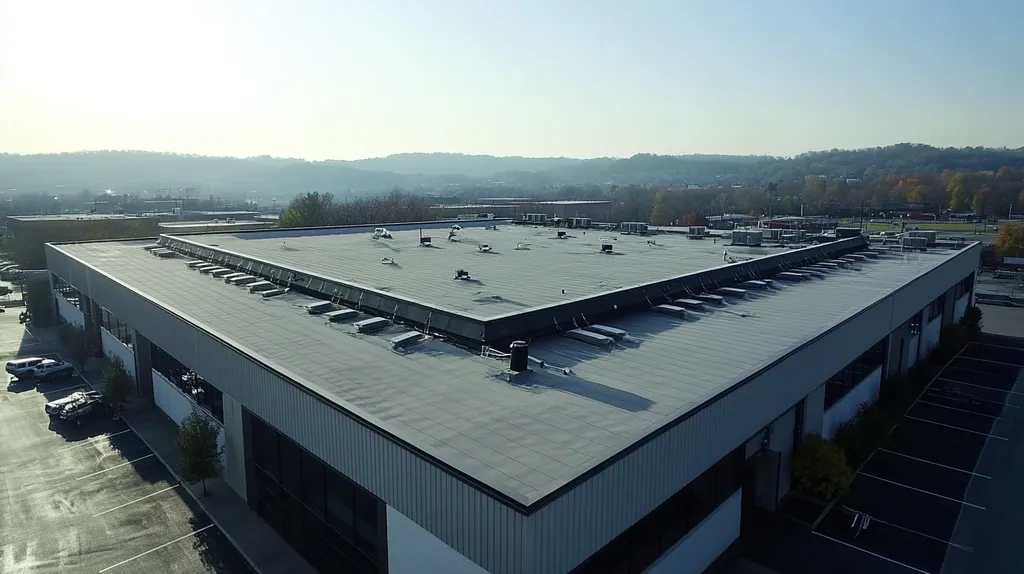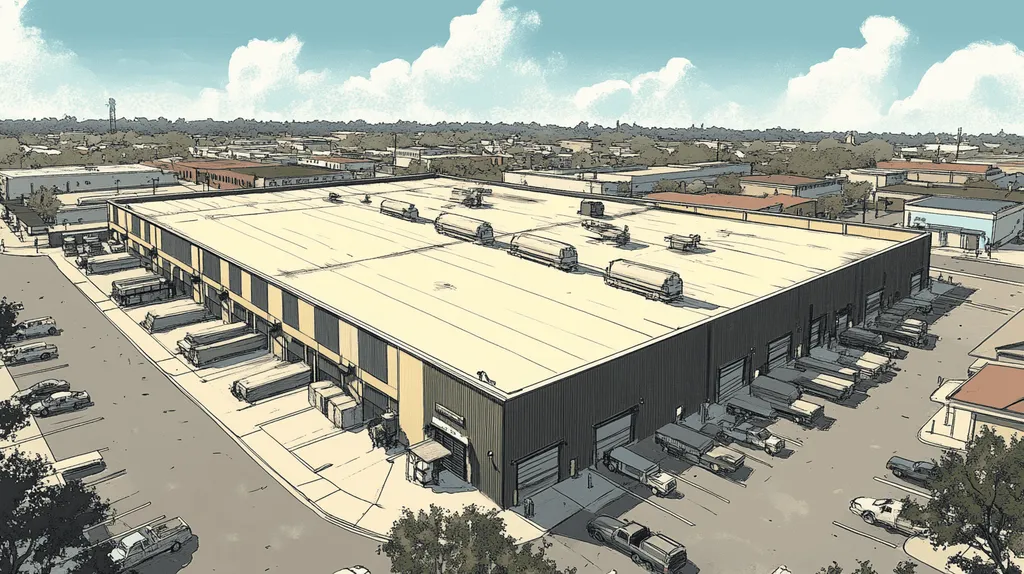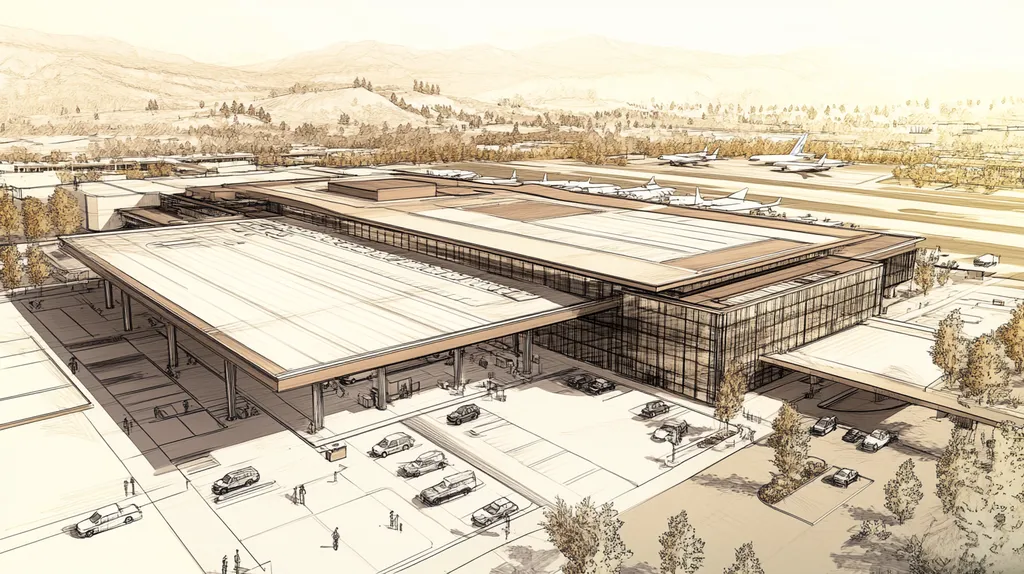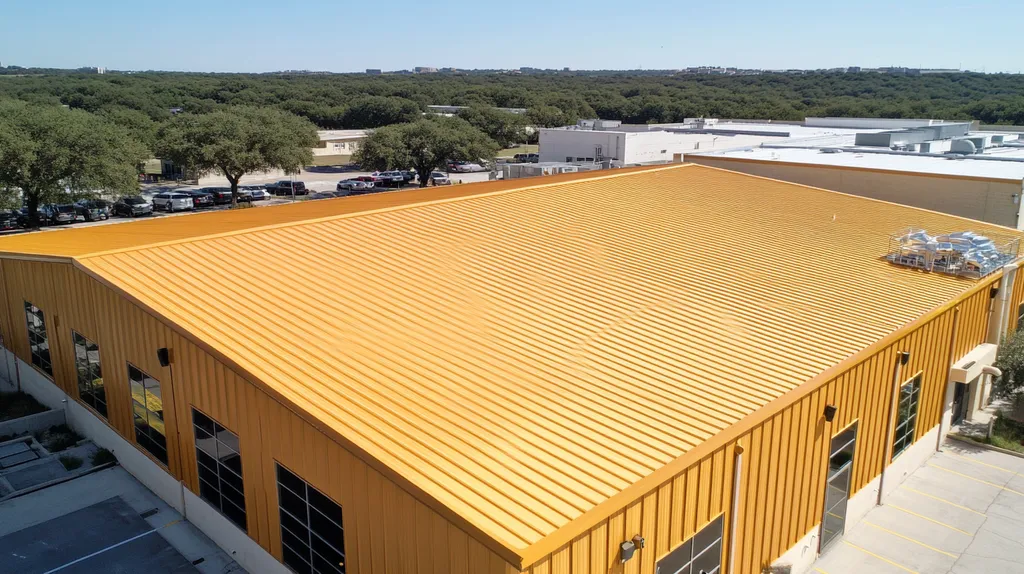In the evolving landscape of commercial roofing, the stakes of proper ventilation have never been higher. Studies show that up to 90% of premature roof failures can be traced back to inadequate ventilation systems, resulting in billions of dollars in repairs annually.
As modern buildings become increasingly airtight, the need for strategic ventilation solutions has transformed from a luxury to a necessity. Yet misconceptions about ventilation requirements continue to plague property owners, leading to costly mistakes.
This comprehensive guide separates fact from fiction, examining how ventilation retrofits impact everything from energy efficiency to structural integrity, while providing evidence-based solutions for today’s commercial properties.
SECTION 1: COMMON MISCONCEPTIONS
Many property owners overlook the vital role of proper ventilation in commercial roofing systems. Inadequate ventilation can lead to serious consequences, such as soaring energy costs and a shortened roof lifespan. For example, structures lacking sufficient airflow are prone to moisture accumulation, which jeopardizes structural integrity and may necessitate expensive repairs down the line.
Ventilation is Only for Hot Climates
A prevalent myth is that ventilation concerns only apply in warmer climates. The reality is that proper ventilation is critical regardless of geographical location. In colder areas, inadequate ventilation can trap humidity and lead to ice damming, which creates a pathway for water intrusion, potentially damaging insulation and ceilings.
Research shows that high humidity levels can accelerate deterioration, leading to costly repairs. The American Society of Heating, Refrigerating and Air-Conditioning Engineers emphasizes that effective ventilation is crucial for maintaining air quality throughout the year, not just in the summer.
Even in moderate climates, heat buildup can become problematic. Elevated temperatures can degrade roofing materials over time, imposing greater long-term financial burdens on property owners.
Thus, building owners must recognize that ventilation is not merely a seasonal concern; it is essential for the durability of any roofing system, no matter the climate.
Static Vents are Always Sufficient
Another common misconception is that static vents can fully address all roofing ventilation needs. While static vent systems have their benefits, they often fail to provide adequate airflow under many circumstances. Elements such as roof size, building configuration, and local weather conditions play a significant role in determining the effectiveness of these systems.
Reliance on static vents alone can result in imbalances in air quality and temperature regulation. For instance, areas without sufficient passive ventilation are likely to retain excess heat.
To achieve optimal airflow, facility managers should explore dynamic solutions, such as powered ventilation options, which can adjust to changing environmental conditions. This strategy ensures a more consistent indoor climate, safeguarding investments in structural integrity and energy efficiency.
Ignoring ventilation needs can accelerate roof wear and lead to unforeseen operational costs, ultimately affecting their bottom line.
Mechanical Ventilation is Too Expensive
A prevalent belief among building owners is that mechanical ventilation systems are prohibitively costly. While the initial investment may seem significant, the long-term benefits can outweigh these upfront costs. Effective mechanical ventilation not only enhances energy efficiency but also contributes to lower utility bills over time.
Additionally, improved airflow can prolong the lifespan of roofing materials, allowing buildings to sidestep frequent repairs or costly replacements. A well-ventilated roof may even qualify for energy-efficient certifications, which can translate into both financial savings and potential tax breaks.
Moreover, neglecting mechanical ventilation does not eliminate costs; rather, it often results in increased expenses due to energy waste and structural deterioration. Investing proactively in mechanical systems can lead to substantial financial advantages in the long run.
In sum, the notion that mechanical ventilation is excessively expensive can divert attention from its true value in effective commercial roofing management.
SECTION 2: PRACTICAL IMPLICATIONS
In the world of commercial roofing, retrofitting with enhanced ventilation options is not just a beneficial upgrade; it’s a necessity. The link between roofing decisions and key factors like indoor air quality, energy efficiency, and moisture management cannot be overstated. For instance, the EPA states that improving ventilation can cut indoor air pollutants by up to 50%. This section delves into the critical areas where thoughtful roofing choices can dramatically affect a building’s overall functionality and health.
Impact on Indoor Air Quality
The quality of indoor air is directly tied to how well ventilation systems operate. Commercial buildings often harbor pollutants like dust, mold, and volatile organic compounds (VOCs). The World Health Organization warns that subpar air quality can lead to a variety of health problems, including respiratory issues and long-term health risks.
By retrofitting roofs with additional ventilation options, property owners can significantly enhance air circulation. This increased airflow helps to dilute and disperse indoor pollutants. For example, a building equipped with energy-efficient exhaust systems can dramatically lower harmful gases like CO2, creating a safer indoor environment.
Furthermore, by adhering to ASHRAE standards for ventilation, buildings achieve better health outcomes for their occupants. Enhanced air exchange rates foster a fresher, more breathable atmosphere.
Moreover, inadequate ventilation can contribute to higher absenteeism, which translates to economic losses. Investing in improved ventilation systems is not just a health decision but a financially savvy one.
Effects on Energy Efficiency
Energy efficiency is a pressing concern for facility managers, especially as utility bills rise. A well-ventilated roof can significantly reduce the heat load on HVAC systems, leading to optimized energy consumption. Buildings without proper ventilation often face challenges of overheating and excessive energy use.
Research from the U.S. Department of Energy highlights that strategic ventilation can lower cooling costs by up to 30%. By retrofitting with airflow-boosting features, property owners can achieve considerable financial savings.
Additionally, the installation of energy recovery ventilators (ERVs) enhances efficiency by utilizing outgoing conditioned air to pre-condition incoming air. This innovation leads to reduced energy costs while ensuring occupant comfort.
When energy-efficient ventilation systems are in place, not only do utility bills decrease, but buildings also contribute to reducing their carbon footprints. Such retrofits can enhance a property’s sustainability ratings, like LEED, improving the organization’s public image.
Prevention of Moisture-Related Issues
Moisture control is crucial for a healthy, long-lasting roof. Poorly designed ventilation can trap humidity, leading to issues such as condensation, mold growth, and structural weakening. The National Institute of Building Sciences indicates that effective moisture management can extend the lifespan of building materials.
By retrofitting roofs with suitable ventilation solutions, property owners can substantially diminish these risks. Proper airflow helps to disperse humidity that would otherwise gather in attics or permeate roofing materials. This proactive measure not only protects the structural integrity but also reduces repair costs.
Particularly in humid climates, buildings benefit significantly from updated ventilation systems. Effectively managing moisture levels allows property owners to avoid costly repairs from water damage and minimizes the disruption of operations.
Ultimately, investing in better ventilation is a safeguard for both the building and its users. The long-term advantages of moisture control extend beyond immediate financial considerations, fostering healthier environments for occupants.
SECTION 3: COST OF MISINFORMATION
The financial consequences of misinformation in commercial roofing can be staggering. Many building owners fail to grasp the importance of effective ventilation, leading to soaring energy costs and unseen structural damage. A recent report from the U.S. Department of Energy reveals that poorly ventilated roofs can cause energy consumption to increase by as much as 30%. Ignoring proper ventilation not only results in inflated utility bills but may also jeopardize a roof’s long-term integrity.
Increased Energy Costs
When a roof lacks adequate ventilation, it often traps heat and moisture, causing HVAC systems to work overtime. This unnecessary strain translates directly to inflated utility bills for property owners.
According to the American Council for an Energy-Efficient Economy, enhancing roof ventilation can reduce energy costs by roughly 15% to 30% in commercial buildings. Improved airflow minimizes moisture buildup, which reduces the frequency of dehumidification efforts, saving even more energy.
By investing in effective ventilation solutions during rooftop retrofits, building owners can avert escalating energy costs and transform a potential financial drain into a sustainable investment.
Reduced Roof Lifespan
Misinformation about roof ventilation can severely cut a roof’s lifespan. When heat accumulates due to insufficient airflow, it leads to problems like membrane degradation and moisture retention.
Research indicates that a well-ventilated roof can outlast its poorly-ventilated counterpart by up to 20 years. Quality roofing materials are built to endure, but excess heat and trapped moisture can drastically shorten their life.
Without a robust ventilation strategy, building owners risk facing premature roof replacements, which can be costly. Regular evaluations and timely retrofits are essential for maintaining a roof’s integrity and longevity.
By addressing ventilation needs early in the retrofitting process, property owners not only safeguard their investments but also reap long-term savings.
Potential for Structural Damage
The dangers of inadequate ventilation extend far beyond financial setbacks. Trapped moisture within roofing systems can become a breeding ground for mold, compromising the structural integrity of buildings.
The National Roofing Contractors Association warns that moisture intrusion can weaken load-bearing components, creating safety hazards and leading to expensive repairs. The financial burden of remedial work often far surpasses the costs associated with installing effective ventilation systems.
Neglecting ventilation solutions can leave building owners grappling with both roofing damage and the expenses tied to repairs in walls, insulation, and electrical systems. This underscores the urgent need for accurate information in roofing decisions and emphasizes the value of investing in proper ventilation.
Incorporating effective ventilation options during roof retrofits is not only crucial for preserving building structures but also for preventing long-term costs and enhancing overall safety.
SECTION 4: REALITY CHECK
In the realm of commercial roofing, the significance of effective ventilation cannot be overstated. A staggering 50% of all roofing failures can be traced back to inadequate airflow. Property owners who underestimate this severity face consequences like moisture buildup, declining energy efficiency, and rising repair costs. This section elucidates the crucial role of ventilation, the interplay of climate and building size, and the architectural design elements that factor into successful roofing retrofits.
Importance of Proper Ventilation
The backbone of a healthy roof relies on proper ventilation. It’s essential for regulating temperature and moisture levels, protecting structures from condensation and heat buildup. Without it, roofs become vulnerable to issues like mold growth and structural damage.
A misunderstanding in the market is that simply adding more insulation solves energy inefficiencies. However, insulation without ventilation can trap heat and moisture, worsening roofing conditions. This reveals the critical relationship between insulation and ventilation.
Moreover, a lack of proper ventilation can lead to unexpectedly high energy costs. Buildings that benefit from effective ventilation can see energy savings of 10% to 20%, translating to meaningful financial relief over time.
Property owners must recognize ventilation as an indispensable component of their roofing strategy. Enhancing ventilation systems during retrofits safeguards investments and creates a more comfortable environment for occupants.
Role of Climate and Building Size
Climate plays a pivotal role in determining specific ventilation needs. In hot, humid regions, roofs require enhanced ventilation to combat heat and prevent moisture accumulation. Conversely, colder climates necessitate careful ventilation strategies to prevent ice dams while optimizing energy efficiency.
The size of a building is equally important. Larger structures often require more sophisticated ventilation systems to ensure proper airflow throughout. Neglecting these requirements can lead to localized overheating and condensation challenges.
Taking climate and size into account is crucial for tailored roofing solutions. For instance, a sizable warehouse in a humid zone may need ridge vents and exhaust fans, while a smaller office may be sufficiently served with simpler passive vents.
By cooperating with roofing professionals, property owners can devise ventilation plans that are customized to their unique environments. Understanding these factors is key to achieving optimal roofing performance.
Architectural Design Considerations
The architectural design of a building significantly influences how effective its ventilation system can be. Roof shapes, slopes, and the materials utilized all play a part in the efficacy of airflow. For example, flat roofs might require refined mechanical ventilation to ensure proper air circulation.
Strategic use of design features like skylights can bolster natural ventilation but must be thoughtfully placed. Poorly positioned skylights may obstruct airflow, diminishing their effectiveness.
Furthermore, considering ventilation during the initial design phase can help minimize costs and enhance overall system efficiency. Retrofits that ignore architectural nuances risk implementing ineffective ventilation solutions.
Ultimately, property owners should advocate for designs that prioritize ventilation. Collaborating with architects who understand roofing dynamics is essential for creating structures that support the long-term health of the building.
SECTION 5: EVIDENCE-BASED ALTERNATIVES
As building codes become more stringent and sustainability takes center stage, the necessity for effective ventilation solutions in commercial roofing cannot be overstated. Insufficient ventilation leads to moisture build-up, elevated energy costs, and structural complications that can dramatically shorten the lifespan of roofs. Property owners and facility managers must investigate robust ventilation strategies that deliver both immediate benefits and long-term gains by enhancing overall building performance. This section highlights three evidence-based alternatives: mechanical systems, ridge and eave vents, and natural ventilation methods.
Mechanical Ventilation Systems
When tackling the complexities of air circulation in commercial spaces, mechanical ventilation systems stand out as a highly effective solution. These systems employ fans and ducts that actively regulate the flow of air, adeptly managing temperature and humidity levels. For example, energy recovery ventilators (ERVs) are designed to reclaim heat from outgoing air, significantly reducing energy losses and operational costs.
Moreover, mechanical ventilation systems provide tailored ventilation rates to meet specific building needs. In manufacturing facilities, the increased heat and moisture generated by machinery require heightened airflow. By deploying a mechanical system that adapts to these variable demands, property owners can markedly improve indoor air quality and comfort for occupants.
Additionally, cutting-edge mechanical systems often integrate smart technology, enabling real-time monitoring and adjustments through IoT devices. This adaptability not only optimizes energy efficiency but also positions these systems as forward-thinking investments for commercial properties.
Investing in mechanical ventilation ensures compliance with evolving building codes, mitigating the risks of legal challenges or insurance claims stemming from inadequate ventilation practices. This option not only protects occupant health, but it also secures the financial integrity of the building.
Ridge and Eave Vent Solutions
For commercial roofs with pitched designs, ridge and eave vent systems are essential for facilitating efficient airflow. These mechanisms allow warmer air to escape through the ridge, while cooler air enters through the eaves. By employing this passive ventilation method, buildings can maintain optimal temperatures and decrease reliance on energy-intensive cooling solutions.
The use of ridge vents reduces the build-up of hot, moist air inside the structure, a significant benefit for facilities housing temperature-sensitive materials or equipment. Enhanced air circulation minimizes exposure to conditions that could foster mold growth or compromise structural integrity, thereby extending the roof’s lifespan and protecting valuable assets.
Moreover, implementing ridge and eave vents is often a cost-effective strategy. Studies have shown that buildings with well-placed ridge ventilation systems incur lower cooling expenses compared to those without. This natural air circulation affords both environmental and financial advantages, contributing to a more sustainable approach to building operations.
Lastly, these vent solutions seamlessly integrate with existing roof designs, making them a practical choice for retrofitting. Facility managers can enhance performance with minimal disruption, adding significant value to the property.
Natural Ventilation Options
Natural ventilation harnesses the inherent properties of air movement to facilitate airflow within commercial buildings. By strategically placing windows, vents, and openings, facility managers can effectively capture wind and harness thermal buoyancy, reducing the necessity for mechanical systems. This approach not only diminishes energy expenditures but also lessens the building’s carbon footprint.
One effective natural ventilation strategy includes the use of operable windows and louvers, empowering occupants to actively manage airflow and internal temperatures. Large commercial spaces like warehouses can benefit from wide-span vents that permit hot air to escape while drawing in fresh air simultaneously, optimizing indoor conditions and lessening reliance on HVAC systems.
This ventilation method shines in climates that support natural air movement. In regions characterized by consistent breezes, correctly positioned openings can provide effective cooling without the financial burden associated with air conditioning units. A well-implemented natural ventilation plan bolsters occupant comfort and enhances overall energy efficiency.
However, it is vital to consider local climate conditions and the building’s configuration when developing natural ventilation strategies. A meticulous assessment ensures that the solutions deliver intended benefits without compromising indoor air quality or comfort. Ultimately, natural ventilation presents a sustainable and cost-effective option for commercial structures aiming to upgrade air quality while minimizing operational costs.
SECTION 6: TEST AND VERIFY
In the realm of commercial roofing, ensuring effective ventilation isn’t just a matter of preference—it’s a necessity. Many property owners fail to grasp the critical importance of continuous testing and verification, often resulting in dire consequences such as mold growth, structural damage, and escalated energy costs. Conducting thorough ventilation audits, implementing intelligent monitoring systems, and committing to regular maintenance practices are integral steps for safeguarding these substantial investments. By proactively addressing these areas, property owners can ensure the longevity and performance of their roofs.
Conducting Ventilation Audits
Ventilation audits are vital for evaluating how well existing systems function. These assessments measure airflow and humidity levels, allowing building owners to identify deficiencies that need addressing. By mapping ventilation performance, property managers can highlight specific areas where improvements or retrofits are essential.
Utilizing sophisticated tools like anemometers and thermal imaging cameras ensures accurate measurements. Hotspots may signal areas needing enhanced ventilation, particularly to combat overheating. Regular audits track how changes in building use or external factors affect ventilation efficiency.
Establishing a regular auditing schedule fosters proactive management and equips decision-makers with crucial data. For instance, a facility struggling with indoor air quality can benefit immensely from an audit, pinpointing outdated exhaust systems that require attention. This assessment lays the groundwork for smarter upgrades.
Ultimately, consistent ventilation audits contribute to enhanced energy efficiency and occupant comfort while guarding against premature roof failure. A commitment to regular assessments leads to a more reliable investment in the building’s future.
Using Intelligent Monitoring Systems
Intelligent monitoring systems offer real-time insights into a building’s ventilation performance. These advanced technologies can track critical metrics like temperature, humidity, and airflow, empowering facility managers to make rapid adjustments as needed. This data-driven approach enables informed decisions that optimize ventilation protocols.
For example, a retail space may utilize monitoring technologies to correlate customer traffic patterns with ventilation demands. By responding promptly, energy use can align more closely with actual occupancy levels, enhancing operational efficiency. Moreover, these systems can alert staff when conditions slip outside optimal ranges, allowing for timely corrective actions.
Integrating intelligent monitoring with building management software further streamlines operations. Automated alerts ensure that ventilation needs are met without unnecessary delays. By proactively managing ventilation conditions, building owners can sidestep the significant costs associated with neglecting these crucial adjustments.
Ultimately, embracing intelligent monitoring creates a dynamic environment that not only enhances occupant satisfaction but also cuts operational costs. In a landscape where efficiency is king, this method stands out as a wise investment.
Regular Maintenance and Inspection
Ongoing maintenance and inspection are foundational elements of an effective ventilation strategy. Simply installing new ventilation systems falls short without a commitment to regular upkeep. Scheduled inspections help identify hidden problems such as duct leaks or blockages that can significantly compromise system performance.
Employing trained professionals for these assessments ensures optimal results. For instance, routine cleaning of filters and ducts helps resolve airflow issues, ultimately prolonging the life of the roofing system. Regular maintenance proves to be far more cost-efficient than rectifying failures that arise from negligence.
Empowering staff with knowledge about the importance of maintaining ventilation systems contributes to a long-term strategy. Implementing a maintenance calendar ensures that no aspect of the ventilation system is overlooked, which can prevent costly repairs down the line.
In conclusion, consistent maintenance and inspection activities nurture a durable roofing system. Building owners who dedicate themselves to this discipline not only protect their assets but also create healthier environments for all occupants.
The Bottom Line
As commercial buildings evolve toward greater efficiency, the cost of overlooking proper ventilation has reached critical levels, with inadequate systems causing up to $3.3 billion in annual repair expenses across North America.
The integration of modern ventilation solutions into existing structures represents more than an upgrade—it’s an essential safeguard against premature roof failure and escalating energy costs.
From mechanical systems to natural ventilation options, today’s solutions offer unprecedented control over airflow and moisture management, marking a dramatic departure from the passive systems of decades past.
Through careful testing, monitoring, and maintenance, property owners can extend roof lifespans by 15-20 years while reducing energy consumption by up to 30%, transforming what was once viewed as an optional upgrade into a crucial investment in building longevity.
FREQUENTLY ASKED QUESTIONS
Q. Is ventilation only a concern for commercial roofs in warm climates?
A. Proper ventilation is crucial for all climates, including colder ones. Without it, humidity can trap moisture and lead to ice damming, which damages insulation and ceilings. Regardless of location, ventilation plays a vital role in maintaining a roof’s durability and preventing costly repairs.
Q. How does inadequate ventilation affect indoor air quality in commercial buildings?
A. Poor ventilation can lead to indoor air pollutants like dust and mold. Retrofits that enhance airflow reduce these pollutants significantly, fostering a healthier environment for occupants and minimizing risks associated with poor air quality.
Q. What financial risks arise from false beliefs about industrial roofs and ventilation?
A. Misinformation about ventilation can lead to higher energy costs and increased repair expenses. Proper systems, when implemented correctly, can reduce energy consumption and prolong the roof’s lifespan, proving to be a vital investment for property owners.
Q. How does climate affect ventilation needs for commercial roofs?
A. Climate dramatically influences a roof’s ventilation requirements. In humid areas, enhanced ventilation is necessary to prevent moisture buildup. Conversely, in colder climates, strategic ventilation prevents ice damming and optimizes energy efficiency, ensuring the roof’s longevity.
Q. Are mechanical ventilation systems worth the investment for commercial roofs?
A. Yes, mechanical ventilation systems provide tailored airflow and significantly enhance energy efficiency. While the initial cost may be high, their long-term benefits, such as reduced energy bills and improved indoor air quality, justify the investment for property owners.
Q. How can facility managers ensure effective ventilation systems on industrial roofs?
A. Regular ventilation audits and intelligent monitoring systems are crucial. By evaluating airflow and humidity levels, facility managers can identify inefficiencies and ensure the systems operate correctly, ultimately safeguarding the roof and enhancing energy efficiency.
Q. What are some cost-effective alternatives for improving ventilation on commercial roofs?
A. Ridge and eave vents are excellent alternatives that promote natural airflow without high costs. Natural ventilation strategies utilize building orientation and design to enhance airflow effectively, reducing dependence on mechanical systems while contributing to energy savings.











